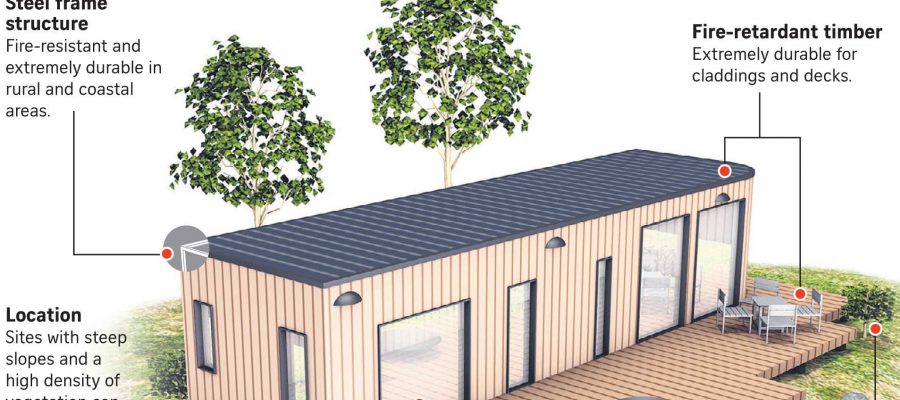In a quiet stretch of countryside outside Melbourne, an unusual building – likened to a James Bond lair – peeks out of the grass-covered hillside.
This unusual-looking home is in Whittlesea, an area that had been devastated by the Black Saturday bush fires in 2009 which killed 173 people and were the most deadly in Australian history.
The house is protected from fires by the surrounding soil and does not have a roof or other surfaces that risk exposure to flying embers during fires.
Discussing the property’s ability to withstand bush fires, architect Sean O’Bryan observed: “You can’t burn the soil down.”
Mr O’Bryan, a partner at the firm which designed the house, Baldwin O’Bryan Architects, has been focusing on designing low-cost “earth-sheltered” houses that are protected by surrounding soil.
His firm has been commissioned to build 18 such houses and has received hundreds of expressions of interest from Australian residents who are increasingly concerned about the threat of bush fires.
“Most houses burn down through ember attacks,” he told The Sunday Times. “In these houses, there are no gutters or sheet metal roofs. There is no way for embers to get into the house.”
These bunker-like houses are part of a push in Australia to promote the use of materials and design features that are better suited to a hotter, drier climate in which bush fires are likely to become more intense and frequent.
Since September last year, bush fires across Australia have razed an area larger than any in recorded history. More than 10 million hectares have been burned, and at least 28 people have died. The blazes also destroyed more than 2,000 homes.
As Australia turns to reconstruction over the coming months, experts have been considering ways to improve the safety and design of future buildings.
An architect and founding member of the Bushfire Building Council of Australia, Dr Ian Weir, who is also a lecturer at Queensland University of Technology, said homes in fire-prone areas need to limit the risk from embers, which cause about 80 per cent to 90 per cent of property damage in bush fires.
He said twigs and leaves within 20m of the house should be cleared, and gaps in the exterior of the house, such as between walls and windows, should be no greater than 2mm.
“Most houses are lost from ember attacks, not direct contact with the fire front,” he said.
Currently, a national construction code assigns houses in Australia a bush fire risk rating if they are within 100m of areas that are prone to blazes.
There are six ratings – from “very low risk” to “extreme risk” – which are based on features such as the vegetation surrounding the house or the property’s exposure to embers and radiant heat.
For each rating, the code outlines building requirements for features like floors, walls, windows, doors, roofs and verandahs.
Houses with higher ratings, for instance, may be required to be built with non-combustible materials or to include shutters around windows and doors.
The code is likely to be reviewed as part of an inquiry into the ongoing fires. Prime Minister Scott Morrison has flagged plans for a wide-ranging inquiry. The code had previously been altered to include recommendations from a royal commission following the 2009 Black Saturday fires.
An expert on fire safety engineering, Professor Raymond Loveridge from the University of Technology Sydney, said the code’s aim is not purely to minimise damage to buildings, but must also take into account the costs of compliance.
But Prof Loveridge said the current fires may prompt changes to the building code, particularly if the destroyed properties were modern and had complied with recent standards.
“One key factor that will be worthy of research is the age of the buildings destroyed,” he wrote on The Conversation website.
“Depending on how many homes lost were built after 2010, it might be argued that changes made after the 2009 Victorian fire have been insufficient to keep up with evolving conditions.”
Dr Weir said Australians need to undergo a change in attitude and must be ready to abandon features such as wooden verandahs, which have long been considered an almost essential component of the average rural home.
“We don’t have an ethos of adaptation in Australia,” he told The Sunday Times.
“Most people want the Aussie dream home but don’t understand that it is actually a huge privilege to build in these biodiverse bush land sites… There is still a cultural lag and a need to shift away from the Aussie homestead with a timber deck.”
